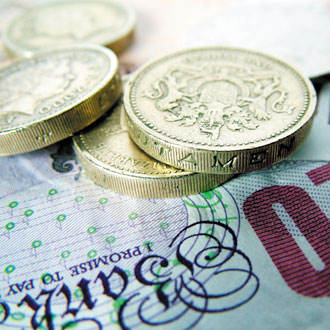Exclusive GP partners saw their pay drop by an average of 4% in the first six months of the financial year, despite an increase in the global sum, Pulse can reveal.
The Pulse survey of 644 GP partners found that 46% said they had a pay decrease between April and October, while only 8% said their pay had increased in that time.
Close to one in ten GP partners surveyed saying that their pay had fallen by more than 10% since last April.
There are no official figures giving an accurate picture of GP pay. NHS Digital releases figures, but they are a year behind and fail to take into account the amount of time GPs work and any private work they are taken .
GPs in England were promised a 1% pay increase in the 2016/17 contract, as part of a 3.2% funding uplift – designed to meet rising expenses facing practices such as CQC fees, indemnity fees, national insurance, employer superannuation increases and running expenses.
At the time, accountants said the uplift could see ‘first increase in earnings for several years’.
But respondents to the survey said that the uplift was not enough to cover the increasing costs, while others pointed to funding cuts in other areas – including PMS and MPIG cuts.
Dr Ismat Nasiruddin, a GP principal from London said: ‘As a full time GP [I’ve seen a] a £15,000 a year drop in income over the past two years – to sustain my normal income I have to top up with private work.
’It’s almost as if I’m doing an extra job to supplement the NHS shortfall. I’ve been in medicine since 1995 and a GP for 11 and am working harder and longer than ever. I feel deflated by not being able to offer my patients the service we used to; no appointment availability, no time, poor follow up – it’s just impossible.’
Dr Claudia Shand, a GP partner in Hampshire said: ‘Our practice profits have been falling annually over the past few years due to both reducing funding (we are a PMS practice) and increasing costs. Increasing costs are partly due to increasing practice nurse hours and taking on an extra doctor to try and alleviate the workload.’
Other GPs said that they have opted for a cut in income to reduce workload.
North Tyneside GP partner Dr Karen Buchanan said: ‘Working in a new practice because the workload in my last practice was unmanageable and unsafe. I now work in a rural practice where the care is excellent but the future very uncertain.The price I pay for giving safe care and retaining some sanity, at least for now, is a significant reduction in income.’
GP leaders said that working conditions for GPs were becoming increasingly unsafe and called on the Government to make a sustained investment into the profession to halt the crisis.
Dr Chaand Nagpaul, chair of the GPC, said: ’The Government has to recognise that we cannot continue to stagger on with a workforce that is working beyond safe limits and is shrinking as more GPs opt to leave medicine.
’We need politicians to act on their promises and deliver a period of sustained, long term investment in general practice that allows patients to receive safe, quality care. The BMA has called for safe working limits for all GPs as part of its Urgent Prescription for General Practice and has put forward proposals to NHS England to enable this.’
Survey results in full
What change in drawings have you personally experienced since April?
| PAY | Number of respondents | Percentage |
|---|---|---|
| More than 20% | 9 | 1.40 |
| 16-20% | 6 | 0.93 |
| 11-15% | 6 | 0.93 |
| 6-10% | 12 | 1.86 |
| 1-5% | 20 | 3.11 |
| No change | 216 | 33.54 |
| -1-5% | 90 | 13.98 |
| -6-10% | 100 | 15.53 |
| -11-15% | 51 | 7.92 |
| -16-20% | 28 | 4.35 |
| -more than 20% | 27 | 4.19 |
| Don’t know | 79 | 12.27 |
| Total | 644 |
The survey was launched on 9 November 2016, collating responses using the SurveyMonkey tool. The 29 questions covered a wide range of GP topics, to avoid selection bias on one issue. A total of 644 GP partners and principals answered the question above.
Pulse October survey
Take our July 2025 survey to potentially win £1.000 worth of tokens














